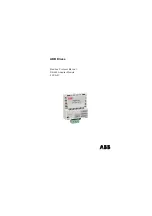
CALIBRATION PROCEDURE
NI PXIe-5693
RF Preselector Module
This document contains the verification and adjustment procedures for the National Instruments
PXIe-5693 (NI 5693) RF preselector module. Refer to
for more
information about calibration solutions.
Contents
Required Software .................................................................................................................... 2
Related Documentation ............................................................................................................ 2
Test Equipment......................................................................................................................... 2
Test Conditions......................................................................................................................... 10
Initial Setup............................................................................................................................... 10
Characterizing the Test System ................................................................................................ 10
Designating the Power Splitter Reference Output............................................................ 11
Zeroing and Calibrating the Power Sensor....................................................................... 11
Characterizing the RF Source 1 Power (Direct)............................................................... 11
Characterizing the RF Source 2 Power (Direct)............................................................... 13
Characterizing the RF Source Power (with Splitter and Attenuator) ............................... 14
Characterizing the RF Source Power (with Combiner, Splitter, and 20 dB
Characterizing the Spectrum Analyzer (with Cable and 10 dB Attenuator) .................... 18
Verifying Noise Figure..................................................................................................... 19
Verifying In-Band Third Order Intercept (TOI)............................................................... 24
Verifying Out-of-Band TOI.............................................................................................. 29
Verifying Reverse Isolation.............................................................................................. 34
Verifying Calibration Signal Amplitude Accuracy .......................................................... 38
Adjusting RF Gain............................................................................................................ 41
Adjusting Cal Tone Power Accuracy ............................................................................... 44
Reverification ........................................................................................................................... 47
Appendix A: Test Frequencies for RF Gain Adjustment ......................................................... 47
Appendix B: Test Frequencies for Cal Tone Amplitude Adjustment ...................................... 51
Worldwide Support and Services ............................................................................................. 54


































